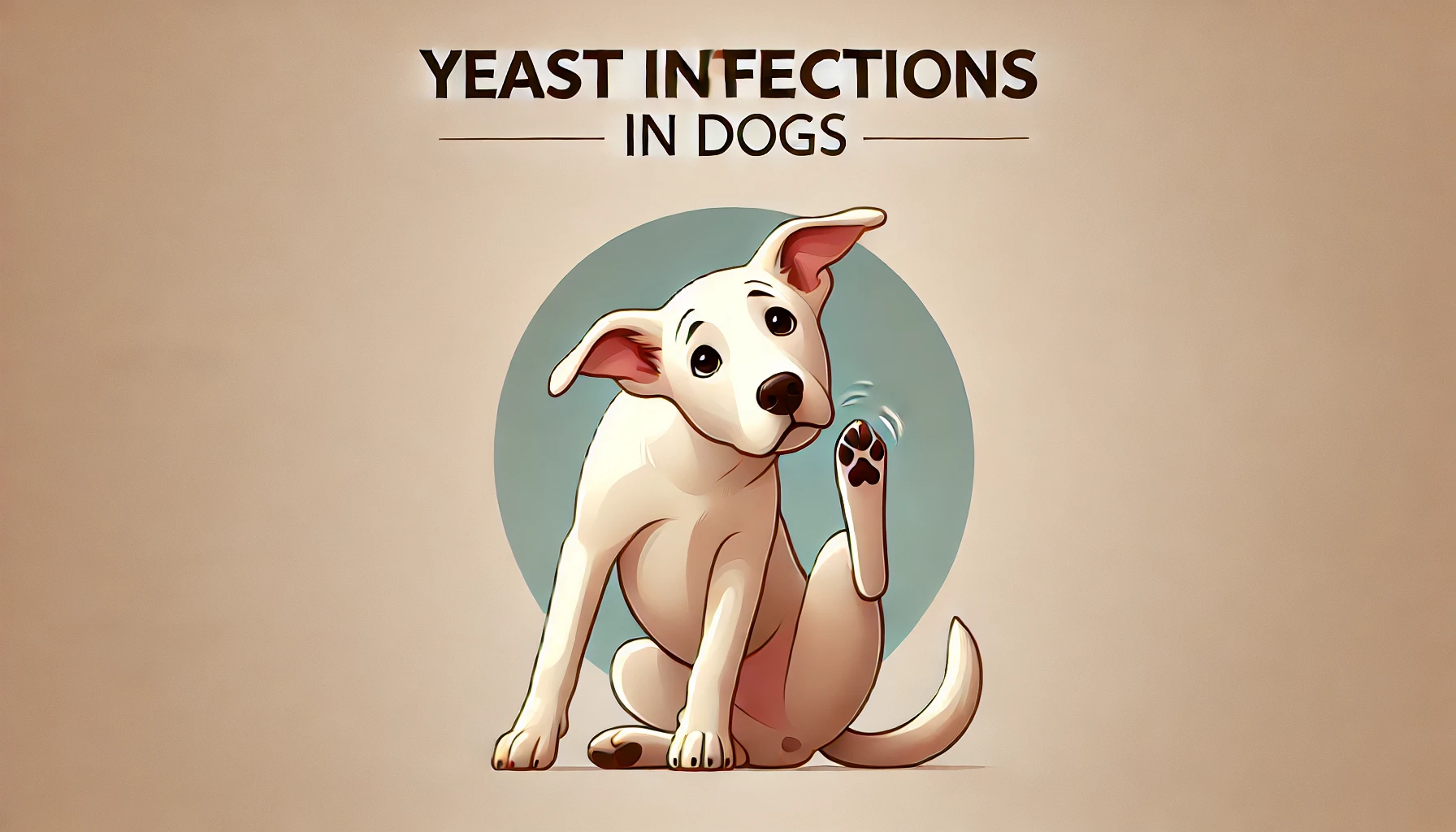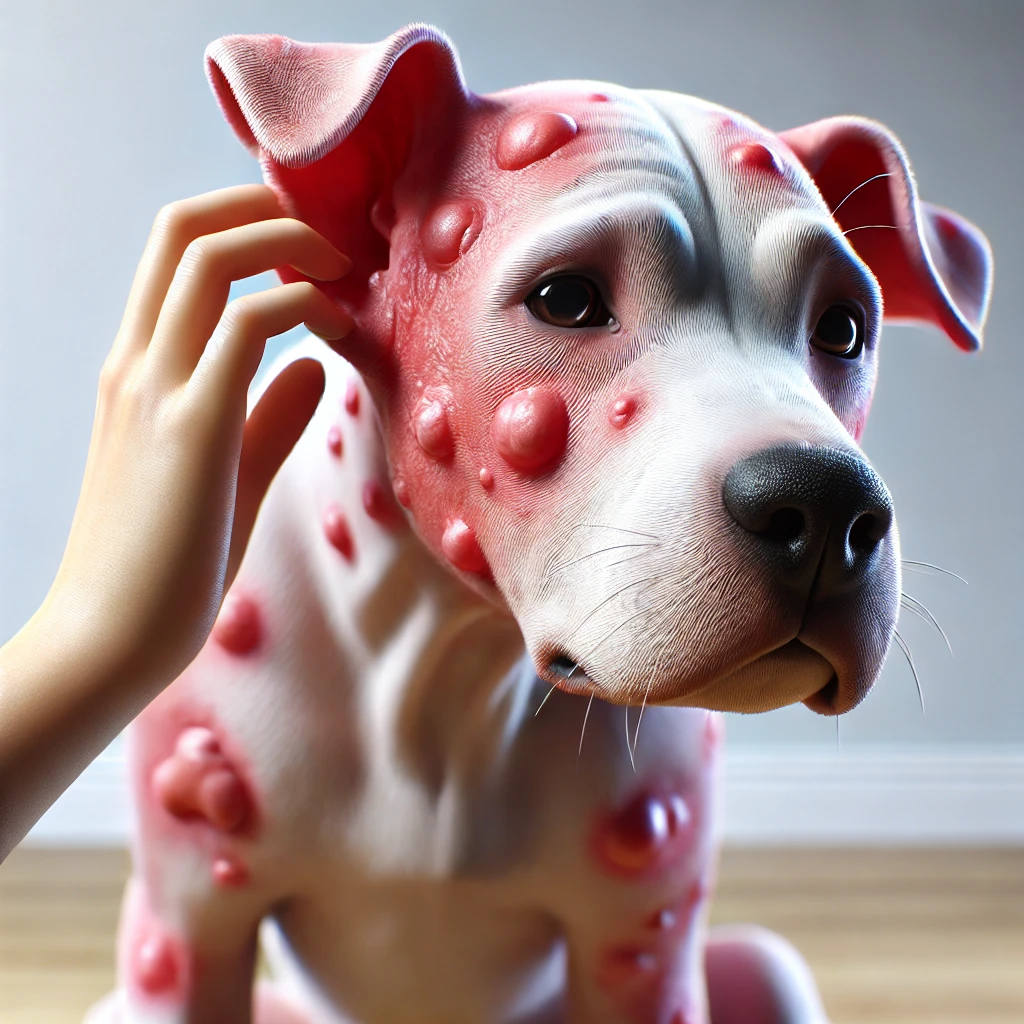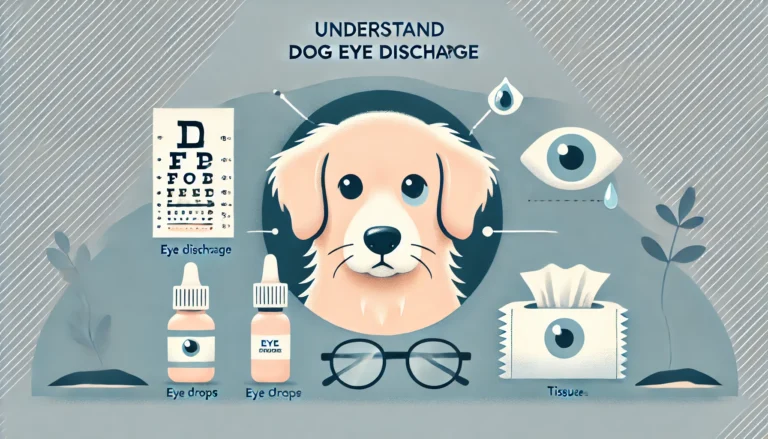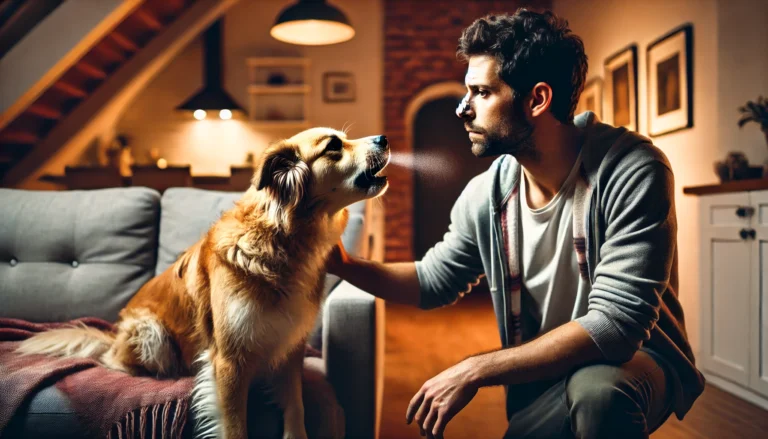Understanding Yeast Infections in Dogs

Yeast infections in dogs are a common issue that many pet owners face. These infections are caused by an overgrowth of the yeast that is naturally found in a dog’s body, which can lead to discomfort and health problems for your furry friend.

What is Yeast?
Yeast is a type of fungus. The most common yeast in dogs is Malassezia pachydermatis. This yeast is normally found in small amounts on the skin, ears, and mucocutaneous areas like lips and anal area.
Causes of Yeast Infections in dogs
Several factors can contribute to the development of a yeast infection in dogs, including:
- Excessive moisture (e.g., from bathing or swimming)
- Allergies (environmental and food-related)
- Hormonal imbalances (such as hypothyroidism)
- Weak immune system
- Use of antibiotics or steroids (which can disrupt natural flora)
Symptoms of Yeast Infections in dogs
The symptoms of yeast infections in dogs can vary depending on the affected area but typically include:
- Itching and scratching
- Red, irritated skin
- Musty odor
- Thickened skin (“elephant skin“)
- Oily skin
- Hair loss
- Black or brown discoloration of the skin
- Ear infections with a brown, waxy discharge
Do you know?
Dog intestinal blockage is one of the most irritating disease in dogs that could be a potential life killer. It is, therefore, immensely important to know types, signs, and what to do in such situation.
Diagnosis of Yeast Infections in dogs
To diagnose a yeast infection, a vet will typically:
- Review medical history
- Conduct a physical exam
- Take skin or ear samples for microscopic analysis and culture
Table: Diagnostic Techniques for Yeast Infections in dogs
| Technique | Purpose | Description |
|---|---|---|
| Physical Exam | Initial assessment | Check for signs of irritation, discharge. |
| Microscopy | Confirm presence of yeast | Examine samples under a microscope. |
| Culture | Identify specific yeast type | Grow yeast in a lab to identify the strain. |
Treatment Options of yeast infections in dogs
Treatment of yeast infections in dogs may include:
- Topical treatments: Medicated shampoos, creams, and ointments to reduce yeast growth and soothe inflammation.
- Oral medications: Antifungal drugs, like ketoconazole or fluconazole, especially in recurrent cases.
- Ear solutions: Specific solutions to clean the ear and treat the infection.
- Dietary changes: Enhance the immune system and reduce yeast growth.
- Managing the environment: Keeping the dog dry and clean, regular grooming, and using hypoallergenic bedding.
Preventing Yeast Infections in dogs
Prevention is crucial and includes:
- Regular grooming: Keeping your dog clean and dry.
- Dietary adjustments: Providing a balanced diet that supports the immune system.
- Avoiding allergens: Identifying and avoiding food and environmental triggers.
- Regular vet visits: For early detection and management of underlying conditions.
Home Remedies for Yeast Infections in dogs
Some home remedies that may help manage yeast infections include:
- Apple cider vinegar: Diluted for use in rinsing the dog’s coat (avoid ears and eyes).
- Coconut oil: Has natural antifungal properties, can be applied to the skin.
- Probiotics: To help maintain a healthy balance of bacteria and yeast in the body.
Table: When to See a Vet for Yeast Infections in Dogs
| Symptom or Situation | Description | Recommended Action |
|---|---|---|
| Persistent Itching and Scratching | Continuous discomfort that does not improve with initial home or OTC treatments. | Consult your vet to rule out severe yeast infection or other skin conditions. |
| Worsening Skin Redness or Irritation | Increased inflammation or swelling, especially around paws, ears, and folds. | See a vet to get appropriate topical or systemic treatment. |
| Unpleasant Smell | Strong, musty odor that persists even after bathing and cleaning. | This could indicate an overgrowth needing professional treatment. |
| Discharge from Ears or Skin | Any unusual discharge, particularly in the ears, which can signal an infection. | Seek veterinary care to prevent further infection and complications. |
| Behavioral Changes | Increased lethargy, loss of appetite, or unusual behavior. | These could be signs of discomfort or pain; a vet visit is necessary. |
| Recurrent Infections | Frequent yeast infections despite previous treatments. | A vet can help identify underlying causes that need addressing. |
| No Improvement with Over-the-Counter Remedies | Symptoms persist or worsen after using non-prescription treatments. | Professional diagnosis and prescription medication may be required. |
This table can be a valuable part of the article, guiding dog owners on when to seek veterinary advice to ensure effective management and treatment of yeast infections, keeping their pets in optimal health.
Conclusion
Understanding and addressing yeast infections in dogs requires a comprehensive approach that includes proper diagnosis, effective treatment, and preventative strategies to ensure your pet remains happy, healthy, and comfortable.
FAQs on yeast infections in dogs.
What food kills yeast in dogs?
Foods that are low in starches and sugars can help starve the yeast, as these are the primary sources of nourishment for yeast. Consider feeding your dog a diet rich in proteins and complex carbohydrates like vegetables. Foods containing antifungal properties such as oregano or garlic (in very small amounts as garlic can be toxic in higher doses) can also help control yeast growth.
What not to feed a dog with a yeast infection?
Avoid foods high in sugars and carbohydrates, which fuel yeast growth. This includes foods like potatoes, corn, wheat, rice, and sweet fruits. Also, avoid ingredients that your dog may be allergic to, as allergies can exacerbate yeast infections.
What does a dog yeast infection look like?
A yeast infection in dogs typically appears as irritated, red, itchy, or discolored skin. In severe cases, the skin can become greasy or oily, or have a crusty, flaky surface. Common areas affected include the ears, paws, armpits, and around the neck.
What do you wash a yeasty dog with?
Use an antifungal shampoo made for dogs to wash a yeasty dog. These shampoos often contain ingredients like miconazole, chlorhexidine, or ketoconazole. Bathing your dog once a week with this type of shampoo can help control yeast growth on the skin.
What home remedy kills yeast in dogs?
Apple cider vinegar, diluted with water (a ratio of 50/50), can be effective as a topical home remedy for yeast infections. It can help adjust the pH level of your dog’s skin, making it less hospitable to yeast. Always test a small area first to ensure it doesn’t irritate your dog’s skin.
How do I detox my dog’s yeast?
Detoxing a dog with a yeast infection involves dietary changes, regular bathing, and possibly adding supplements. Remove high-carb foods from their diet and include probiotics and digestive enzymes to help restore gut health. Regular bathing with medicinal shampoos can also help reduce yeast on the skin.
Can yogurt help dogs with yeast infections?
Yogurt with live, active cultures can help strengthen the gut flora and reduce yeast overgrowth, particularly in the digestive tract. Ensure the yogurt is plain and free from added sugars or artificial sweeteners, which could worsen yeast infections.
How to stop yeast in dog’s paws?
Regularly cleaning and drying your dog’s paws is crucial. Wash your dog’s paws with a gentle, antifungal shampoo or wipes. Keep the paws dry, as moisture can promote yeast growth. Additionally, regular trimming of fur between the toes can help reduce yeast accumulation.
Does coconut oil help yeast infections in dogs?
Coconut oil has antifungal properties and can be used topically to treat yeast infections in dogs. It can be applied to the affected areas to soothe itchy skin and combat yeast. However, use it sparingly as excessive oil might trap more dirt or create excess moisture.






